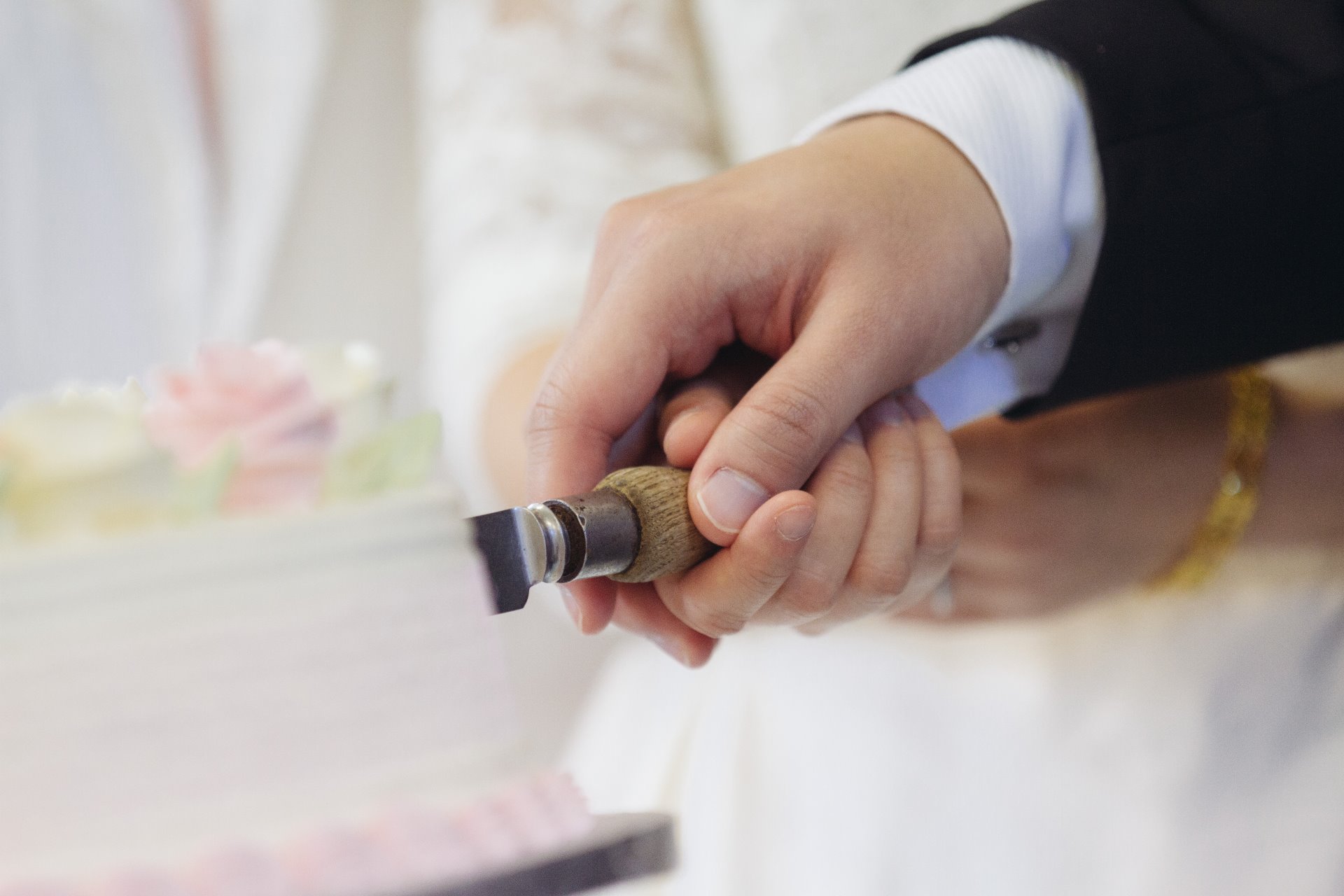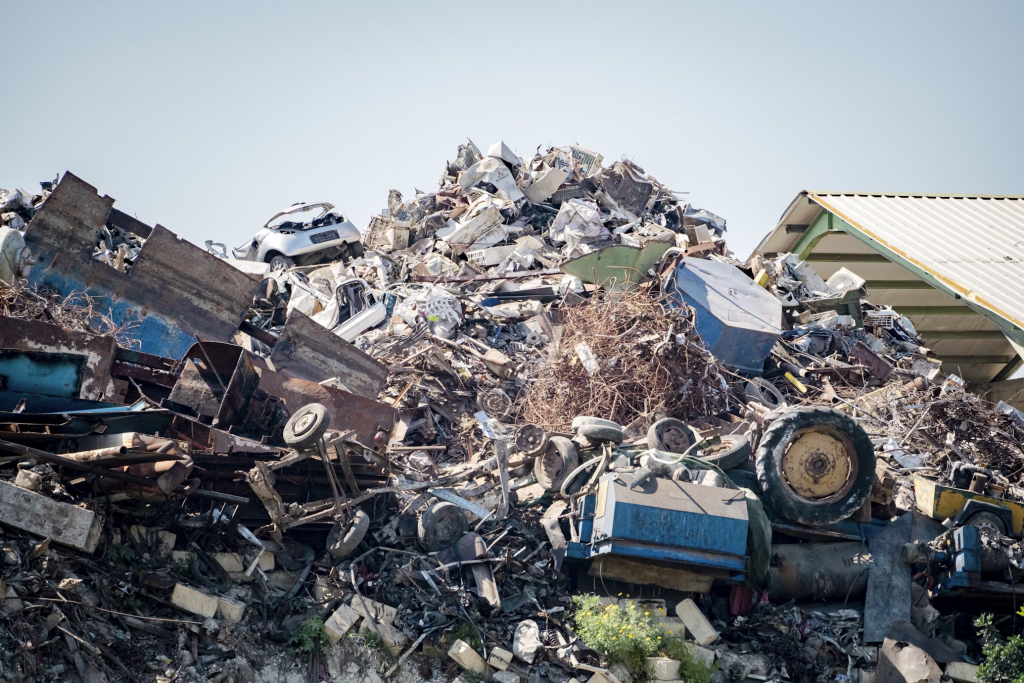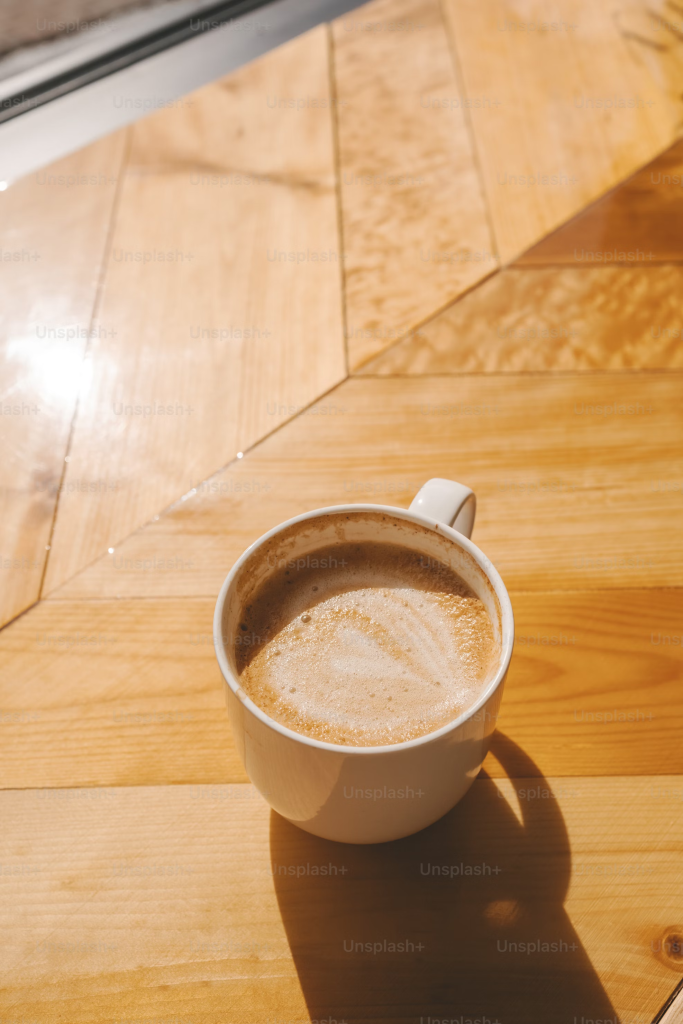BRIDAL COUTURE
DORA BAKER
BRIDAL ALTERATION



See How
~ Our Gowns ~
Ut elit tellus, luctus nec ullamcorper mattis, pulvinar dapibus leo.
Click edit button to change this text. Lorem ipsum dolor sit
amet, consectetur adipiscing elit.



John & Alisa
LA – 26.10.2018


Mike & Amanda
NY – 26.10.2018



Steave & Julia
SF – 26.10.2018
What Is The Checklist Of Building Inspection
A building inspection is one of the most crucial steps in the process of buying, selling, or maintaining a property. It involves a thorough examination of the building’s condition to identify potential issues, ranging from structural problems to electrical and plumbing defects.

In Australia, a detailed building inspection can save homeowners from costly repairs in the future and provide peace of mind about the safety and integrity of the property. Below is a comprehensive checklist for a building inspection, breaking down the key areas that should be examined during an inspection. This guide will serve as an excellent resource for anyone undertaking a building inspection in Australia.
Click Have A Peek At These Guys For More Details
Building Inspection Checklist: A Comprehensive Guide For Australian Homeowners
Exterior Inspection
The exterior of the building is the first line of defence against weather elements and environmental factors. The building’s façade should be inspected for both aesthetic and functional concerns.
- Foundation and Footings: The foundation is the core structure of any building, and it’s essential to check for signs of cracking or movement. Look for gaps in the walls, floors, or foundation and any uneven flooring.
- Roof Condition: The roof is one of the most important components of a building, and a faulty roof can lead to significant damage. Inspect the roof for damaged tiles or sheets, rust, leaks, or sagging areas. Check for blocked gutters and downpipes, which could lead to water damage.
- Walls: Inspect the exterior walls for cracks, chips, peeling paint, or water stains, all of which could be indicative of underlying issues, such as water ingress or structural damage.
- Windows and Doors: Ensure all windows and doors are functional and free from issues like rot, water damage, or warping. Check the seals around windows and doors to ensure they are airtight.
- Pest and Termite Damage: Australia is known for its termite problems, and a thorough inspection for signs of termites or other pests should be conducted, particularly around the exterior of the building. Look for holes in timber and signs of mud tunnels along the foundation or walls.
- Drainage and Landscaping: Check that the land around the building slopes away from the structure to prevent water pooling near the foundation. Ensure that all drains are functioning properly.
Interior Inspection
Inside the building, the inspector must evaluate the state of the structure, the systems, and other areas that could affect the livability and safety of the property.
- Structural Integrity: Inspect the interior for signs of movement in the walls, floors, and ceiling. Look for cracks, sagging, or areas where the building seems to be settling unevenly.
- Ceiling and Walls: Check for signs of water damage, mould, or dampness, particularly in areas near pipes, bathrooms, or exterior walls. Look for cracked plaster or other damage that could affect the stability of the building.
- Floors: Assess the condition of all flooring, whether carpet, timber, tiles, or laminate. Check for unevenness, squeaky boards, or any significant damage, particularly in high-traffic areas. Look for signs of moisture or mould underneath the flooring.
- Insulation: Check if the building is well insulated, particularly in the roof space. Insulation helps to regulate temperature, and inadequate insulation could lead to higher energy costs.
- Windows and Doors: Ensure that interior windows and doors open and close properly. Check for any signs of wear and tear or damage, particularly around the frames. Also, verify that locks and latches are in working order.
Plumbing And Electrical Systems
A building’s plumbing and electrical systems are vital for both safety and comfort. Improperly maintained systems can lead to costly repairs and safety hazards.
- Plumbing: Check all plumbing fixtures for leaks, drips, or signs of water damage. Inspect the water pressure in taps and showers and verify the functionality of hot water systems. Check for any corrosion on pipes, particularly in areas like the bathroom, laundry, and kitchen. Inspect the drainage system for blockages or slow drainage.
- Waterproofing: Ensure that wet areas such as bathrooms, kitchens, and laundries have been properly waterproofed. This includes checking for adequate seals around baths, showers, and basins.
- Sewage and Stormwater Systems: Examine the sewage and stormwater systems for any signs of damage or leaks. Ensure that there are no blockages, particularly in the pipes that lead to the main sewer or stormwater drain.
- Electrical Systems: A qualified electrician should inspect the electrical wiring and fuse box. Check that the wiring is up to Australian safety standards, and make sure there are no exposed wires. Test all electrical outlets, switches, and lighting fixtures to ensure they are in working order. Ensure the building is equipped with modern circuit breakers or safety switches.
Roof Space And Subfloor
The roof space and subfloor are areas that are often overlooked during routine inspections but are essential to check for potential issues.
- Roof Space: Check the roof space for signs of leaks, mould, or poor ventilation. Ensure that the roof space is adequately ventilated to prevent condensation buildup, which can lead to timber rot or mould growth.
- Insulation: Ensure that the insulation in the roof space is adequate, and check for any signs of damage or dislodgement. Insulation plays a key role in energy efficiency and maintaining a comfortable temperature inside the building.
- Subfloor: The subfloor, particularly in buildings with timber floors, should be checked for signs of moisture, timber rot, or termite activity. Make sure there is adequate ventilation under the floor to prevent moisture accumulation. Ensure the floor joists and beams are in good condition and free of damage.
Safety Features
Ensuring that the building complies with Australian safety standards is vital. During the inspection, it is important to assess whether the building has all the necessary safety features in place.
- Fire Safety: Check that smoke alarms are installed in all the required locations throughout the building. Ensure that fire extinguishers and fire blankets are in place if required by local regulations. Assess the building’s evacuation routes and fire exit plans.
- Building Codes and Regulations: Ensure that the building complies with the latest Australian building codes and local council regulations. This may include accessibility requirements, structural safety, and environmental sustainability standards.
- Glass and Windows: Verify that all windows have safety glass where required, particularly in areas where there is a risk of breakage or impact.
Mould And Damp Issues
Australia’s climate can make buildings susceptible to moisture problems, especially in coastal regions. Mould and dampness can lead to significant health and structural issues, so a thorough inspection of these problems is crucial.
- Mould: Look for visible signs of mould on walls, ceilings, and flooring. Check for musty smells, which could indicate hidden mould. Mould can cause health issues, so addressing it promptly is essential.
- Dampness: Inspect for signs of dampness or moisture on walls, especially in areas prone to water exposure. This could indicate problems with waterproofing or inadequate drainage.
- Ventilation: Ensure that the building has proper ventilation to prevent moisture buildup in wet areas. This includes extractor fans in kitchens, bathrooms, and laundry rooms.
Landscaping And Outdoor Areas
While the building’s structure is a priority, it’s also essential to assess the outdoor areas for potential risks or issues that could impact the property.
- Retaining Walls: Check that retaining walls are stable and free of cracks or signs of shifting. Cracked or leaning walls could indicate foundation issues.
- Driveways and Paths: Inspect driveways and paths for cracks, uneven surfaces, or any other damage that may pose a safety risk or affect the aesthetics of the property.
- Outdoor Structures: Assess outdoor structures like decks, pergolas, and fences. Ensure that they are structurally sound and free from rot or termite damage.
Conclusion
A building inspection is a comprehensive process that evaluates all aspects of a property, from its structural integrity to its plumbing, electrical systems, and safety features. This checklist provides a valuable guide to help ensure no area of the property is overlooked during the inspection process.
For anyone purchasing a property, a thorough building inspection is essential to protect against unexpected repair costs and ensure the property is safe and functional. In Australia, due diligence during a building inspection can make all the difference in ensuring you’re making a sound investment.
Frequently Ask Question
How Often Should I Get A Building Inspection Done?
Building inspections should be done before purchasing any property and regularly if you own an older home. Typically, every 5 to 10 years is a good guideline for established properties. However, if you’ve had recent weather damage or renovations, a more frequent inspection may be required.
What Is Included In A Building Inspection Report?
A building inspection report typically includes an assessment of the property’s structure, foundation, roofing, plumbing, electrical systems, insulation, windows, and doors. The report will also highlight any potential issues or areas requiring immediate attention, along with an estimated cost for repairs.
Do I Need A Specialist For A Building Inspection?
While a general building inspector can assess the overall condition of a property, specialists may be required for certain issues, such as pest inspections (for termites or other infestations), electrical systems, or plumbing. It’s often recommended to engage a licensed inspector for a comprehensive evaluation.
Gypsum Vs Cement Plaster: Which Is The Best For Ceiling?
Choosing the right plaster for a ceiling is essential for ensuring durability, aesthetics, and maintenance efficiency. Two common options are gypsum plaster and cement plaster, each with its own advantages and drawbacks.

A gypsum ceiling is popular for its smooth finish and lightweight properties, while cement plaster is known for its strength and moisture resistance. Understanding the differences between these two materials can help in making an informed decision.
Difference Between Gypsum Plaster And Cement Plaster
1. Composition And Raw Materials
- Gypsum Plaster: Made from calcium sulphate dihydrate, commonly known as Plaster of Paris (POP).
- Cement Plaster: A mixture of cement, sand, and water, sometimes reinforced with other additives for durability.
2. Strength And Durability
- Gypsum Plaster:
- Softer and more fragile compared to cement plaster.
- Not ideal for areas exposed to heavy impact.
- Prone to damage if exposed to moisture for prolonged periods.
- Cement Plaster:
- Highly durable and can withstand external conditions.
- Less prone to wear and tear, making it suitable for high-traffic areas.
- Can withstand physical impact without significant damage.
3. Moisture Resistance
- Gypsum Plaster:
- Absorbs moisture, which can cause deterioration and peeling over time.
- Not suitable for bathrooms, kitchens, or humid regions.
- Cement Plaster:
- Water-resistant, making it ideal for moisture-prone areas.
- Used for both indoor and outdoor applications.
4. Setting Time And Curing
- Gypsum Plaster:
- Sets within 30-45 minutes, allowing for quick project completion.
- No need for water curing after application.
- Cement Plaster:
- Takes 24-48 hours to dry and requires 7 days of water curing.
- Extended curing time increases labour and project duration.
5. Weight And Structural Load
- Gypsum Plaster:
- Lightweight and exerts less pressure on the ceiling structure.
- Suitable for high-rise buildings where reducing weight is essential.
- Cement Plaster:
- Heavier and increases the structural load.
- Requires a stronger framework to support its weight.
6. Surface Finish And Aesthetic Appeal
- Gypsum Plaster:
- Provides a smooth and polished surface without additional finishing.
- Ideal for false ceilings and decorative designs.
- Cement Plaster:
- Has a rough texture that requires putty and finishing coats before painting.
- Less preferred for aesthetic applications.
7. Cost Comparison
- Gypsum Plaster:
- More expensive per square metre but saves money on finishing coats.
- Cement Plaster:
- Initially cheaper, but additional costs for putty and finishing increase the overall expense.
8. Environmental Impact
- Gypsum Plaster:
- Considered eco-friendly as it has a lower carbon footprint.
- Recyclable and produces less construction waste.
- Cement Plaster:
- High carbon footprint due to cement production.
- Generates more waste and contributes to environmental degradation.
Which Is The Best For Ceiling?
The choice between gypsum vs cement plaster depends on factors like location, budget, durability, and aesthetic preference.
1. Best Choice For Residential Ceilings
- Gypsum Plaster is recommended for:
- Living rooms, bedrooms, and offices requiring a smooth finish.
- False ceilings and decorative designs due to its lightweight properties.
- Areas without moisture exposure for long-term durability.
- Cement Plaster is better for:
- Kitchens, bathrooms, and basements where moisture resistance is needed.
- Low-cost housing projects where budget constraints are a concern.
2. Best Choice For Commercial And Industrial Spaces
- Gypsum Plaster suits:
- Corporate offices and shopping centres where an elegant aesthetic finish is required.
- Acoustic ceilings due to their sound insulation properties.
- Cement Plaster is ideal for:
- Factories and warehouses that demand high-strength surfaces.
- Outdoor applications where ceilings are exposed to harsh weather conditions.
3. Best Choice For High-Rise Buildings
- Gypsum Plaster is preferred because:
- It reduces the structural load, making it safer for high-rise constructions.
- It speeds up the installation process, reducing construction time.
- Cement Plaster is used in areas like:
- Utility rooms and service areas where durability matters more than aesthetics.
4. Best Choice For Cost Efficiency
- Gypsum Plaster offers:
- Long-term savings as it does not require additional finishing coats.
- A faster installation process, reducing labour costs.
- Cement Plaster is cheaper initially but:
- It requires additional putty and finishing coats, which add to the final cost.
- Takes longer to apply, increasing labour expenses.
Conclusion
The choice between gypsum plaster and cement plaster for ceilings depends on the application, budget, and environmental conditions. Gypsum plaster is ideal for dry indoor areas where a smooth finish and lightweight material are preferred.
Cement plaster, on the other hand, is best for high-moisture areas and locations that require durability. Evaluating factors like moisture exposure, strength, cost, and aesthetics helps determine the best option for any ceiling project.
Frequently Asked Questions
Does Gypsum Plaster Crack Over Time?
Gypsum plaster is less prone to shrinkage cracks compared to cement plaster. However, improper application or moisture exposure can lead to surface cracks and deterioration.
Can Cement Plaster Be Used For Decorative Ceilings?
Yes, but it requires additional finishing work. Unlike gypsum plaster, cement plaster has a rough surface that needs putty and sanding to achieve a decorative look.
Which Plaster Has Better Insulation Properties?
Gypsum plaster provides better thermal and sound insulation. It helps maintain indoor temperatures and reduces noise levels, making it suitable for residential and commercial spaces.
The Top 5 Mortgage Broker Services You Didn’t Know You Needed
When people think of mortgage brokers, they typically imagine someone who helps you secure a home loan. While this is certainly one of their primary functions, brokers offer a wide range of services that can make a substantial difference in your home-buying or refinancing journey.

Some of these services may not be immediately obvious but are incredibly valuable when navigating the complexities of mortgages. Below are the top five mortgage broker services you didn’t know you needed. You can also visit this page for more information. (https://www.freedommortgagesolutions.com.au/)
1. Access To A Wide Range Of Lenders
Why This Service Matters
One of the most significant benefits of working with a mortgage broker is the access they provide to a large variety of lenders, not just banks. This means you’re not limited to the products offered by one financial institution.
Brokers have relationships with multiple lenders, including banks, non-bank lenders, and credit unions. This gives you access to more competitive rates and loan products that might not be available directly from a single lender.
How It Works
Mortgage brokers work by assessing your financial position and needs. Then, they shop around for the best loan products from a range of lenders. This means you can access loan options that suit your individual financial situation, rather than just what a single lender offers.
Brokers can often access exclusive deals and discounts, making them a valuable ally in finding the best mortgage deal for your circumstances.
- Wide Variety of Lenders: Brokers can provide loan options from a wide range of banks, non-bank lenders, and other financial institutions.
- Exclusive Deals: Mortgage brokers often have access to exclusive offers and discounts not available to the general public.
- Competitive Interest Rates: Brokers can secure better rates by shopping around on your behalf, often saving you money.
2. Expert Guidance On Loan Structure
Why Loan Structure Is Key
Loan structure refers to the way your mortgage is set up, including whether it’s a fixed-rate, variable-rate, interest-only, or split loan. It’s important to choose the right structure as it affects your repayment terms, flexibility, and overall financial strategy.
Many people are unaware of the different types of loan structures available, and making the wrong choice can lead to higher costs or inflexibility down the track.
Types Of Loan Structures
- Fixed-Rate Loans: These loans have an interest rate that remains the same for a set period, typically between one and five years. This provides predictability in monthly repayments.
- Variable-Rate Loans: The interest rate can change depending on market conditions, meaning your repayments can go up or down. These are ideal for people who are willing to take on more risk in exchange for potentially lower rates.
- Interest-Only Loans: For a specified period (usually up to 5 years), you only pay the interest on the loan and not the principal. This structure is beneficial for investors who need to keep their repayments low initially.
- Split Loans: A combination of fixed and variable rate loans. This structure offers a mix of stability and flexibility, allowing borrowers to balance predictable repayments with potential savings from variable rates.
How Brokers Help
A mortgage broker will explain the benefits and risks of each loan structure, helping you choose the most suitable option based on your financial situation and goals. They’ll assess factors such as your long-term plans, risk tolerance, and income stability to ensure you make an informed decision.
- Tailored Loan Options: Brokers help identify the best loan structure for your specific needs and financial situation.
- Flexibility: They can recommend a mix of fixed and variable rates for maximum benefit.
- Cost Savings: Choosing the right loan structure could save you money in the long run.
3. Refinancing Advice To Save Money
The Refinancing Process
Refinancing can be a powerful tool for homeowners looking to save money or restructure their home loan. Many people don’t realise that refinancing is an option until it’s too late or they may be unsure if it’s the right move for them. Mortgage brokers can help identify when refinancing is a good idea and how to take advantage of current market conditions.
How Brokers Can Help With Refinancing
- Assessing Your Current Loan: A broker will assess your existing mortgage and compare it with the current market conditions to determine if refinancing is beneficial.
- Negotiating Better Rates: Brokers have established relationships with lenders and can negotiate better rates and terms for you, even after you’ve already secured a loan.
- Reducing Loan Terms or Costs: They can help you structure the refinancing to shorten your loan term, reduce repayments, or eliminate unnecessary fees.
- Accessing Equity: Refinancing can also allow you to access the equity in your home, which can be used for renovations, investments, or other financial needs.
Key Benefits
- Save on Interest: Refinancing can reduce your overall interest rate, saving you thousands in the long run.
- Shorten Loan Terms: A broker can help restructure your loan to reduce the time it takes to pay off your mortgage.
- Access Additional Funds: Refinancing may provide an opportunity to tap into your home’s equity for other uses.
4. Pre-Approval And Loan Application Support
Importance Of Pre-Approval
Before you start looking for properties, getting pre-approved for a mortgage can give you a better understanding of your borrowing power. A pre-approval tells you how much you can borrow and helps you avoid wasting time on properties that are outside your budget. Many buyers don’t realise that having pre-approval also makes you a more attractive buyer to sellers.
How Mortgage Brokers Assist With Pre-Approval
- Paperwork and Documentation: Mortgage brokers can guide you through the often-complicated paperwork and documentation required for pre-approval.
- Negotiating Terms: Brokers can negotiate on your behalf to ensure you get the best terms during the pre-approval process.
- Clear Understanding of Borrowing Power: By using a broker, you’ll have a clear picture of how much you can afford to borrow and at what interest rate.
Key Benefits
- Avoid Wasting Time: You’ll only look at properties within your budget, making the house-hunting process more efficient.
- Stronger Position as a Buyer: Sellers prefer to deal with pre-approved buyers, which can give you an edge in competitive markets.
- Confidence in Your Budget: Knowing your borrowing limit upfront reduces stress and helps you stay within your financial boundaries.
5. Ongoing Support Throughout The Mortgage Term
Continued Support Beyond Settlement
Once you’ve secured your mortgage, many people assume that the relationship with their broker ends there. However, a good mortgage broker continues to provide support throughout the life of your loan, helping you make adjustments as needed.
How Brokers Provide Ongoing Support
- Reviewing Your Loan Regularly: A broker will monitor market changes and interest rate fluctuations, advising you when it’s time to renegotiate or refinance.
- Providing Repayment Strategies: If your financial situation improves, a broker can suggest ways to pay off your mortgage faster, reducing the overall interest you pay.
- Offering Financial Advice: Brokers can help you with other financial products and offer general advice on managing your money, including investment loans or insurance.
Key Benefits
- Ongoing Cost Savings: Brokers help ensure you’re always on the most competitive rate, potentially saving you money.
- Maximise Your Equity: Brokers can help you access and use your home’s equity to fund renovations, investments, or other goals.
- Financial Peace of Mind: Having a broker who is actively looking after your mortgage provides peace of mind and helps you achieve your long-term financial goals.
Conclusion
Mortgage brokers provide far more than just loan options. They offer a range of services that can make a big difference in how you manage your mortgage over time. From giving you access to multiple lenders to providing ongoing support throughout the life of your loan, the services they offer go beyond just securing the best deal.
By understanding the top five services you didn’t know you needed, you can leverage the expertise of a mortgage broker to save money, reduce stress, and make informed decisions about your financial future.
Frequently Asked Questions
What Is The Difference Between A Mortgage Broker And A Bank?
A mortgage broker acts as an intermediary between you and multiple lenders, helping you find the best mortgage deal. In contrast, a bank only offers its own mortgage products. Brokers can access a wider variety of loans, often with better rates and terms, than what is available through a single bank.
Can A Mortgage Broker Help Me If I Have Bad Credit?
Yes, mortgage brokers are particularly helpful for individuals with bad credit. They have relationships with a variety of lenders who specialise in working with borrowers who may not meet the strict criteria of traditional banks. Brokers can help you secure a loan or provide guidance on improving your credit score before applying.
Are Mortgage Brokers Paid By The Lender Or The Borrower?
In most cases, mortgage brokers are paid by the lender in the form of a commission once a loan is settled. This fee is typically not passed onto the borrower, but it is always important to clarify the payment arrangement with your broker beforehand. Some brokers may charge a fee to the borrower, particularly if they offer specific or personalised services.
Maximising Small Bathroom Spaces: Renovation Tips For Tiny Rooms
Renovating a small bathroom can be challenging, but with the right strategies, it’s possible to maximise every inch and create a functional, stylish space. When renovating a tiny bathroom, careful planning is key to utilising available space efficiently.

Whether it’s choosing the right fixtures, clever storage solutions, or using light and colours effectively, each renovation decision plays a critical role in enhancing the overall bathroom experience. Click here for a detailed guide on how to make the most of your small bathroom renovation.
1. Effective Planning For Small Bathroom Renovations
Assess The Available Space
Before diving into any renovations, start by carefully assessing your small bathroom space. This involves measuring the bathroom’s dimensions and evaluating where fixtures are located. Take note of the door’s swing and the space between each fixture to ensure a smooth flow and avoid overcrowding.
- Create a floor plan: Use online tools or graph paper to sketch the layout of your bathroom.
- Prioritise fixtures: Ensure that essentials like the toilet, shower, and sink are functional while leaving room for movement.
Maximise Traffic Flow
In a small bathroom, you need to maximise available floor space to maintain a smooth flow. When planning your renovation, consider how easy it will be to move between fixtures.
- Avoid crowding: Don’t place fixtures too close together.
- Use pocket or bi-fold doors: These options save space compared to traditional swinging doors.
2. Choosing The Right Fixtures
Compact Fixtures For Small Bathrooms
One of the best ways to maximise small bathroom spaces is to opt for compact fixtures. These fixtures take up less space and help the room feel more open and functional.
- Compact sinks: Consider a wall-mounted or corner sink to save floor space.
- Slimline toilets: Choose a space-efficient toilet design that’s still comfortable and functional.
- Space-saving bathtubs: If you prefer a bathtub, select a compact one or opt for a corner bath design.
Floating Fixtures For More Room
Floating fixtures are a brilliant way to create the illusion of space in a small bathroom. These fixtures are mounted to the wall, leaving the floor area visible and making the room feel more open.
- Floating vanities: Choose a floating vanity for added storage without blocking the floor space.
- Wall-mounted toilets: These toilets are ideal for small spaces, as they help open up the floor area.
3. Storage Solutions For Small Bathrooms
Utilise Vertical Space
In a tiny bathroom, the key to maximising storage is using vertical space. Install shelves, cabinets, or storage units that reach upward to free up the floor.
- Wall shelves: Install shelves above the toilet or above the sink to store toiletries and towels.
- Tall storage cabinets: Use narrow, tall cabinets to store bathroom essentials.
Hidden And Custom Storage Options
Another way to maximise space is to incorporate hidden storage solutions. These options help keep the bathroom tidy and organised without overcrowding the space.
- Under-sink storage: Opt for a vanity with built-in drawers to hide toiletries and cleaning supplies.
- Mirror cabinets: Install mirrored medicine cabinets for discreet storage while maintaining a clean look.
Maximise Nooks And Crannies
Even in small spaces, there are often hidden nooks that can be turned into functional storage. Make use of every inch to store items that would otherwise clutter the room.
- Over-the-door organisers: Use the back of the bathroom door for towel racks or hooks.
- Custom-built shelving: Tailor shelves to fit awkward corners or spaces behind doors.
4. Lighting And Mirrors To Open Up Small Bathrooms
Strategic Mirror Placement
Mirrors are an excellent tool for creating the illusion of space in a small bathroom. By reflecting light and space, mirrors can make the room feel much larger than it is.
- Large mirrors: Consider a single large mirror over the vanity to create a sense of depth.
- Mirrored finishes: Use mirrored furniture or accessories to reflect light and create the illusion of more space.
Maximise Natural Light
Natural light can significantly brighten up a small bathroom, making it feel more spacious. If your bathroom has a window, make sure it isn’t blocked by heavy curtains or fixtures.
- Sheer curtains: Use light, sheer curtains that allow natural light in while maintaining privacy.
- Avoid obstructing the window: Keep large fixtures or cabinetry away from the window to let in as much light as possible.
Use Layered Lighting
In the absence of natural light, layered lighting can create a bright, inviting atmosphere. Using multiple light sources helps to illuminate the entire space, making it appear larger.
- Ceiling lights: Install overhead lights to ensure the whole room is well-lit.
- Task lighting: Add task lighting around the mirror or shower to reduce shadows and create a bright focal point.
5. Colour And Materials For Small Bathrooms
Light Colours For A Spacious Feel
When working with a small bathroom, colour choice is crucial. Light, neutral shades tend to make the space feel larger and more open.
- Pale tones: Opt for whites, light greys, soft blues, or pastel colours for walls, tiles, and accessories.
- Accent walls: If you want to add colour, use a subtle accent wall in a light hue to avoid overwhelming the space.
Reflective Materials For Light And Space
Using reflective materials is another great way to enhance the feeling of space in a small bathroom. Materials like glass and glossy tiles bounce light around, making the space feel more open.
- Glossy tiles: Use glossy, reflective tiles on walls and floors to increase the sense of light and space.
- Glass shower enclosures: Transparent glass partitions or shower screens allow light to flow through, giving the room a more expansive feel.
Minimalist Design Choices
Minimalism is essential when renovating tiny bathrooms. Keep the design simple and clutter-free to maximise space and functionality.
- Streamlined fixtures: Choose simple, sleek designs for vanities, taps, and showers.
- Fewer accessories: Limit accessories to a few essential items to keep the bathroom feeling spacious and uncluttered.
6. Space-Saving Layout Ideas
Corner Showers For Efficient Use Of Space
In a small bathroom, corner showers are a perfect way to utilise every inch of available space while still offering a functional showering area.
- Corner shower units: These showers fit into a corner, freeing up floor space in other areas of the room.
- Curved or quadrant showers: Opt for curved shower screens or a quadrant design to maximise corner space.
Consider Pocket Doors Or Bi-Fold Doors
Traditional swinging doors take up valuable floor space, which can be a problem in a small bathroom. Pocket or bi-fold doors are an excellent solution to save space and make the room feel more open.
- Pocket doors: These slide into the wall, eliminating the need for space in front of the door to open.
- Bi-fold doors: These fold in half, taking up minimal space compared to traditional doors.
Glass Shower Screens For A Spacious Look
Installing glass shower screens, rather than shower curtains or bulky enclosures, can make a small bathroom feel more open and light.
- Frameless glass screens: These screens are sleek and minimalist, helping create the illusion of more space.
- Clear glass partitions: Avoid frosted glass, as it can make the bathroom feel more enclosed.
7. Incorporating Smart Technology For Convenience
Smart Fixtures For Efficiency
Incorporating smart technology in your small bathroom can improve both functionality and space efficiency. Look for smart fixtures that offer convenience and enhance the space.
- Water-saving fixtures: Install smart taps, showers, or toilets that conserve water and reduce the environmental footprint.
- Temperature control: Consider adding smart mirrors with built-in defogging or mirrors with adjustable lighting for a more comfortable experience.
Compact, High-Efficiency Toilets
Compact, high-efficiency toilets are designed to save space without sacrificing functionality. They’re perfect for tiny bathrooms where every inch counts.
- Space-efficient design: Look for smaller profiles that take up less space on the floor while still offering powerful performance.
- Water-saving features: Choose toilets with low water consumption to make your bathroom more sustainable.
Smart Lighting Solutions
Smart lighting can offer flexibility and enhance the atmosphere of a small bathroom. With adjustable brightness, smart lighting can be tailored to suit any time of day or mood.
- Motion sensor lights: These lights turn on when you enter the bathroom, providing convenience and saving energy.
- Adjustable LED lights: Install dimmable LED lights for more control over the brightness and atmosphere.
Conclusion
Maximising small bathroom spaces during a renovation requires creativity and careful planning. By choosing compact fixtures, utilising vertical space, and focusing on clever storage and lighting solutions, you can transform even the smallest of bathrooms into a functional and aesthetically pleasing space.
Thoughtful design decisions can make all the difference, and with the right approach, your tiny bathroom can feel spacious and inviting, even without a large footprint.
Frequently Asked Questions
How Can I Maximise Space In A Small Bathroom?
To maximise space in a small bathroom, opt for compact fixtures, wall-mounted vanities, and floating toilets. Use vertical space for shelves and storage, and incorporate reflective materials like glossy tiles and mirrors to create the illusion of more space.
What Are The Best Fixtures For Small Bathrooms?
In a small bathroom, choose compact and wall-mounted fixtures like corner sinks, slimline toilets, and floating vanities. These fixtures take up less space and help the room feel more open and functional.
How Can I Make My Small Bathroom Feel Bigger?
To make a small bathroom feel bigger, use light colours on walls and tiles, install large mirrors, and ensure plenty of natural light. Avoid clutter, and use glass shower screens to keep the room feeling open and airy.
What Are The Different Types Of Wedding Rings And Their Meaning
Selecting a wedding ring is a meaningful decision, as it represents love, commitment, and personal style. With so many options available, choosing the perfect one can feel overwhelming. From timeless plain bands to intricate cultural designs, each ring carries its own symbolism and significance.

Whether you’re drawn to classic gold, modern two-tone metals, or something entirely unique, there’s a style to match every personality. If you’re curious about the different types of wedding rings and what they symbolise, find out this here.
1. Traditional Wedding Rings
Traditional wedding rings are timeless and carry deep symbolic meanings related to unity and eternal love.
Plain Bands
- Represent simplicity, purity, and a strong marital foundation.
- Usually crafted from gold, platinum, or silver for a classic look.
- Ideal for those who prefer a minimalist yet meaningful ring.
Carved Bands
- Feature intricate designs, often symbolising eternal love and unity.
- Popular patterns include Celtic knots, braids, or floral engravings.
- Offer a more detailed and personalised alternative to plain bands.
2. Contemporary Wedding Rings
Modern wedding rings incorporate new styles, materials, and gemstone arrangements to reflect individual personalities and preferences.
Diamond-Set Bands
- Symbolise everlasting love and strength, as diamonds are one of the hardest substances.
- Available in different settings, such as:
- Channel setting: A row of diamonds secured between two metal strips.
- Pavé setting: Small diamonds set closely together for added sparkle.
- Ideal for those who appreciate elegance and brilliance.
Two-Tone Bands
- Combine two different metals, such as white and yellow gold, for a unique appearance.
- Represent the blending of two lives into one harmonious marriage.
- Offer a stylish contrast while maintaining a timeless quality.
3. Cultural Wedding Rings
Certain cultures have distinctive wedding ring designs, often carrying deep-rooted traditions and meanings.
Claddagh Rings
- Originating from Ireland, featuring two hands holding a heart topped with a crown.
- Each element has a special meaning:
- Hands: Friendship.
- Heart: Love.
- Crown: Loyalty.
- It can be worn in different ways to indicate relationship status.
Puzzle Rings
- Traditionally used in Middle Eastern cultures.
- Comprise multiple interlocking bands that form a single ring when assembled correctly.
- Symbolise the complexity of marriage and the effort required to maintain a strong bond.
4. Personalised Wedding Rings
Couples may choose custom wedding rings to reflect their unique love story.
Engraved Rings
- Feature inscriptions such as names, initials, wedding dates, or special phrases.
- Serve as a constant reminder of love and commitment.
- It can be engraved on the inner or outer surface of the band.
Birthstone Rings
- Incorporate gemstones associated with each partner’s birth month.
- Symbolise individuality and personal significance.
- Common birthstones include:
- Ruby: Passion and love.
- Sapphire: Loyalty and trust.
- Emerald: Growth and renewal.
5. Alternative Wedding Rings
For those who prefer non-traditional materials, alternative wedding rings provide unique symbolism and durability.
Wooden Bands
- Symbolise nature, strength, and a grounded relationship.
- Often made from sustainable or reclaimed wood for eco-conscious couples.
- Lightweight and comfortable for everyday wear.
Silicone Bands
- Represent flexibility, durability, and practicality.
- Ideal for active individuals or those working in professions where metal rings pose a safety risk.
- Available in various colours and designs.
6. Matching Wedding Rings
Some couples prefer wedding rings that coordinate in design, reflecting their shared journey.
Coordinated Designs
- Maintain similar design elements without being identical.
- It can feature matching engravings, metals, or gemstone accents.
- Allow personalisation while keeping a cohesive aesthetic.
Custom Sets
- Designed specifically for a couple with unique elements such as fingerprint engravings or intertwined patterns.
- Represent a personalised connection and shared experiences.
- Often handcrafted to ensure exclusivity.
Choosing The Right Wedding Ring
Selecting the right wedding ring involves multiple factors beyond just design and symbolism.
Considerations For Metal Type
- Gold: Classic, available in yellow, white, and rose hues.
- Platinum: Durable and naturally white, does not fade over time.
- Titanium: Lightweight, strong, and hypoallergenic.
Selecting A Comfortable Fit
- Rings with a rounded interior, known as “comfort fit,” reduce irritation.
- Wider bands tend to feel tighter, so sizing should be carefully measured.
Gemstone Durability
- Diamonds rank highest in hardness, making them durable for daily wear.
- Softer gemstones like opals or pearls may require extra care to prevent damage.
Caring For Your Wedding Ring
To maintain its beauty and longevity, a wedding ring should be properly cared for.
Cleaning And Maintenance
- Regularly clean with mild soap and warm water.
- Avoid exposure to harsh chemicals that can tarnish the metal.
- Get professional cleaning and inspections to check for loose stones.
Proper Storage
- Store in a soft-lined jewellery box to prevent scratches.
- Keep rings separate from other jewellery to avoid potential damage.
Conclusion
Choosing a wedding ring is a deeply personal decision that reflects love, commitment, and individual style. Whether you prefer a classic plain band, a cultural design with deep symbolism, or a modern piece with unique materials, the right ring should suit your personality and lifestyle.
Considering factors like metal type, comfort, and durability will ensure your ring remains a cherished symbol for years to come. With so many options available, couples can find or design rings that truly represent their bond and the journey they share.
Frequently Asked Questions
What Is The Meaning Behind A Claddagh Ring?
A Claddagh ring represents friendship, love, and loyalty. The way it is worn can indicate relationship status—on the right hand with the heart facing outward means single, while inward indicates taken. On the left hand, an inward-facing heart symbolises marriage.
How Do I Choose The Right Wedding Ring Style?
Selecting the right wedding ring depends on personal preference, lifestyle, and symbolism. Consider whether you prefer a traditional, contemporary, cultural, or alternative ring. Factors such as metal type, gemstones, and engravings also play a role.
Can Wedding Rings Be Resized Or Modified?
Yes, many wedding rings can be resized or modified, depending on the material and design. Plain bands and gold rings are easier to resize, while intricate or non-metal rings may require special adjustments by a jeweller.
How Much To Pay For Car Wreckers
When you have an old, damaged, or unwanted vehicle taking up space in your driveway, selling it to a car wrecker can be a practical and financially rewarding solution. Car wreckers, also known as auto recyclers, purchase vehicles for the purpose of dismantling them and recycling valuable parts, scrap metal, and materials. If you’ve ever wondered how much to pay for car wreckers, it’s important to understand the various factors that influence the amount you can expect to receive for your vehicle.

In this guide, we’ll take an in-depth look at the key considerations that affect the price you’ll receive from a car wrecker and the benefits of choosing this option. We’ll also explore the steps involved in selling your vehicle to a wrecker and provide tips on how to get the best deal.
Click Site Link For More Details
How Much Do Car Wreckers Pay For Your Vehicle?
The amount a car wrecker will pay for your vehicle depends on several factors, which we’ll explain below. Generally, car wreckers pay based on the following:
The Condition Of The Vehicle
One of the most significant factors that determine how much a car wrecker will pay is the condition of the vehicle. While wreckers are interested in cars in various states, the condition of your vehicle will affect its overall value.
- Running Condition: If the car is in running condition or only needs minor repairs, it will generally fetch a higher price because the wrecker can resell it for parts or use it as a whole for resale. Running vehicles, especially those with sought-after makes and models, can bring in a higher price.
- Non-Running Cars: Vehicles that are not running or have major mechanical issues, such as damaged engines or transmission problems, will generally be valued lower. However, the car’s metal weight still provides some value, and certain components, such as tyres and batteries, may also be salvaged for reuse.
Make And Model Of The Car
The brand and model of your vehicle will also influence the amount a wrecker is willing to pay. Popular makes and models, especially those with high demand for parts, such as Toyota, Ford, or Holden, can command higher prices.
Cars that are rare or have collectible parts might be valued more highly by wreckers due to the demand for specific components.In contrast, older or less popular vehicles may not fetch as much because the demand for their parts may be lower.
Age Of The Vehicle
The age of your car can play a significant role in determining how much the wrecker will pay. Generally, older vehicles that are in poor condition will be worth less, particularly if their parts are outdated and no longer in high demand. However, if the car is still relatively new, it may still have valuable parts that a wrecker will want to salvage, which could increase its value.
If the car is a late-model vehicle, it could still have plenty of usable parts that can be resold, such as the engine, transmission, and electronics. Wreckers tend to pay more for newer vehicles as they have more resellable parts that are still in good condition.
Weight Of The Vehicle
Wreckers also value vehicles based on their weight, as scrap metal is one of the most valuable resources they recycle. The heavier the car, the more the wrecker will pay for the scrap metal. Larger vehicles such as SUVs, trucks, and vans tend to be heavier and, therefore, can fetch higher prices for their scrap metal.
On the other hand, smaller cars, particularly compact or subcompact vehicles, are lighter and, therefore, typically bring in less money for the scrap metal. Even so, wreckers will still pay for the car’s scrap value, which may be a reasonable option for owners of smaller cars that are no longer in use.
The Location Of The Vehicle
The location of your car can also affect the price offered by wreckers. If the car is located in a remote or difficult-to-reach area, the cost of towing the vehicle may reduce the amount the wrecker is willing to pay. However, most reputable wreckers will offer free towing services, so it’s worth confirming this before agreeing to sell your car to them.
If you are in a more urban or metropolitan area, wreckers may be more competitive in their pricing, as there is a higher demand for parts, and they will have better access to the vehicle for easy dismantling.
The Current Market Value Of Scrap Metal
The price of scrap metal can fluctuate depending on the global market. If the price of scrap metal is high, you can expect to receive a higher price for your vehicle. However, if the price of scrap metal is low, the amount you’ll receive from a wrecker may be reduced.
This is important to consider, as the value of scrap metal is one of the primary factors in determining how much wreckers pay for your vehicle. It’s a good idea to check current scrap metal prices or ask the wrecker for an estimate before committing.
How To Get The Best Deal From A Car Wrecker
If you’re looking to maximise the amount you receive from a car wrecker, there are a few steps you can take:
Get Multiple Quotes
Before you agree to sell your vehicle, contact several car wreckers to get quotes. Different wreckers may offer varying prices, so it’s worth shopping around to get the best deal. Make sure to provide accurate details about the vehicle’s make, model, condition, and location to ensure you receive an accurate quote.
Sell The Vehicle As A Whole
If your car is in reasonably good condition, consider selling it as a whole rather than dismantling it yourself. Wreckers often pay more for complete vehicles, as they can dismantle and recycle the parts more efficiently.
Consider The Scrap Metal Market
If your car is not in good condition and is being sold for its scrap metal value, the current market price of scrap metal will play a big role in determining how much you’ll receive. It’s worth checking online or asking wreckers about the current scrap metal prices to gauge the value of your vehicle.
Ask About Towing Services
Some wreckers offer free towing, which can save you money if the car is not roadworthy. Ensure you ask whether towing is included in the price, as this can make a significant difference to the final amount you receive.
Prepare Your Vehicle
Before you hand over your car, it’s a good idea to remove any personal items, as well as non-metal objects such as clothes or rubbish. Some wreckers may lower their offer if the vehicle is cluttered or difficult to access.
Conclusion
The amount you can expect to pay for a car wrecker in Australia depends on several key factors, including the condition, make, and model of the vehicle, its weight, and the current market value of scrap metal. By understanding these factors and following a few simple tips, you can maximise the amount you receive for your unwanted car.
Selling your vehicle to a car wrecker not only helps you get rid of a vehicle that is no longer useful but also contributes to the recycling of valuable materials and car parts, which is an eco-friendly option for car disposal.If you’re looking to get rid of an old car and want to know how much to expect, reach out to several local car wreckers to get quotes, compare offers, and find the best deal for your vehicle. Whether your car is running or not, wrecking it can be a financially viable solution that benefits both you and the environment.
Frequently Ask Question
How Much Can I Expect To Get Paid For My Car By A Wrecker?
The amount you can expect to receive from a car wrecker depends on the make, model, age, and condition of your vehicle. For a car in good working order, you might receive anywhere from $200 to $8,000 or more. Wreckers typically offer higher prices for newer cars, luxury vehicles, or those with valuable parts. If your car is damaged or non-operational, the amount could be lower, but the wrecker will often still pay for scrap metal or reusable parts. It’s best to get quotes from multiple wreckers to get the best deal.
Can I Sell My Car To A Wrecker If It’s Not Running?
Absolutely! Car wreckers in Australia buy cars in any condition, including those that are not running. In fact, many wreckers specialise in purchasing damaged or non-functioning cars for scrap metal or to sell for parts. Even if your car has been in an accident, is completely broken down, or has been sitting unused for years, a wrecker will typically offer you a fair price.
What Documents Do I Need To Sell My Car To A Wrecker?
To sell your car to a wrecker in Australia, you will generally need to provide proof of ownership, such as the car’s registration papers or title. If the car is registered in your name, a copy of your ID (like a driver’s licence) may also be required. If the car is unregistered, wreckers may still accept it, but the documentation required may vary depending on local laws. Always check with the wrecker for specific requirements.
How Does Retail Transport Impact Australian Businesses
Retail transport in Australia is a vital component of the supply chain, ensuring products reach consumers quickly and efficiently. For businesses involved in retail, the challenge is not only about ensuring timely deliveries but also maintaining cost-efficiency and meeting the unique logistical needs of a vast and diverse country.

This article will explore the critical aspects of retail transport, how it affects Australian businesses, and what strategies companies can adopt to optimise their operations.
Click Browse This Site For More Details
Understanding Retail Transport In Australia
Retail transport refers to the movement of goods from distribution centres, warehouses, or suppliers to retail locations or directly to consumers. With Australia being a large country, businesses face unique transportation challenges. The logistics of retail transport include road, rail, air, and even sea freight, each with its own advantages and limitations.
The Australian retail transport landscape is influenced by geography, population density, urban versus rural distribution, and seasonal demand fluctuations. Retailers must carefully choose the right transportation modes to balance cost, speed, and reliability. As online shopping continues to grow, the importance of efficient and reliable retail transport has never been more significant.
Key Challenges In Retail Transport
Geographic And Infrastructure Challenges
Australia is known for its vast distances and relatively low population density in many regions. The retail transport sector faces the challenge of moving goods efficiently across long distances while dealing with the infrastructure limitations of rural and remote areas
For businesses operating in urban areas like Sydney, Melbourne, and Brisbane, transport may be more straightforward due to the presence of developed road networks and proximity to ports and airports. However, for companies that serve regional and remote areas, the complexity of delivery increases. Routes may not always be well-maintained, and transportation times can vary widely depending on weather conditions or road closures.
Rising Fuel Prices And Environmental Concerns
Fuel costs have a significant impact on the cost of retail transport in Australia. With fluctuations in global oil prices, businesses need to find ways to manage and reduce fuel expenses. Retailers must adopt strategies such as optimising delivery routes and vehicle maintenance schedules to limit fuel consumption.
Additionally, growing environmental concerns and sustainability initiatives are leading to greater scrutiny of the carbon footprint associated with transport. Companies in the retail sector are increasingly under pressure to reduce emissions and find greener transport solutions. Electric vehicles, hybrid trucks, and alternative fuel options are becoming more common, but these solutions often require considerable upfront investment.
Labour Shortages And Skill Gaps
A shortage of skilled drivers and logistics professionals is a critical challenge for the Australian retail transport sector. The demand for qualified drivers, warehouse staff, and logistics managers is rising, and many companies struggle to fill positions.
This talent shortage is compounded by competition from other industries, which are also looking for skilled workers.
To combat this, some businesses are investing in training programs for new workers and offering competitive wages and benefits to attract and retain talent. However, the issue remains a key barrier to effective retail transport operations.
Delivery Expectations Of Consumers
As e-commerce grows, Australian consumers are demanding faster, more convenient delivery options. Same-day and next-day delivery services are becoming the norm in many industries, pushing retailers and logistics providers to innovate. Meeting these expectations without driving up costs is a significant challenge, especially for businesses that don’t have the infrastructure of larger national retailers.
To meet the growing demand for quick deliveries, many businesses are leveraging technology and data analytics to optimise their logistics networks. This might include advanced routing algorithms that ensure deliveries are made quickly while minimising costs.
The Role Of Technology In Retail Transport
Technology plays a significant role in modernising retail transport. As businesses face growing pressure to meet consumer demands for fast, affordable, and sustainable deliveries, innovative technological solutions are becoming increasingly important.
Route Optimisation Software
For retailers, optimising delivery routes is crucial for ensuring timely and cost-effective transportation. Route optimisation software uses data to identify the most efficient paths for deliveries. By analysing factors such as traffic, road conditions, and delivery windows, these tools help retailers reduce fuel consumption, improve delivery times, and avoid delays.
Real-Time Tracking And Monitoring
With the growing demand for transparency in delivery services, many retailers now offer customers real-time tracking. This not only enhances the consumer experience but also provides businesses with valuable insights into their transport operations. GPS tracking systems and IoT-enabled devices allow retailers to monitor their fleets, track shipments and even anticipate delays before they become a problem.
Automation And Robotics
Warehouse automation is another area where technology is making a significant impact. Automated systems such as drones and robotics are increasingly being used to pick, pack, and sort goods in warehouses, streamlining the entire retail transport process. Automation reduces human error, increases efficiency, and speeds up the time it takes for goods to leave the warehouse and reach consumers.
Electric And Autonomous Vehicles
The rise of electric vehicles (EVs) is helping to reduce the environmental impact of retail transport. EVs are becoming more viable for freight operations, especially in urban areas, where their lower emissions can help retailers meet sustainability goals. Additionally, autonomous vehicles could revolutionise the transport sector, reducing the reliance on human drivers and potentially lowering operational costs over time.
Best Practices For Optimising Retail Transport
To remain competitive in a rapidly changing retail environment, businesses must adopt strategies that optimise their transport operations. Here are some best practices that can help streamline retail transport in Australia.
Partnering With Experienced Logistics Providers
Working with experienced third-party logistics providers (3PLs) is an effective way for retailers to improve transport efficiency. These providers have established networks, expertise, and resources to handle complex logistics needs. They can offer tailored solutions based on the size of the business and its specific transportation requirements, helping retailers reduce costs and improve delivery times.
Fostering Collaboration Across The Supply Chain
Effective communication and collaboration between retailers, suppliers, and transport providers are essential for smooth retail transport operations. When all parties are aligned, retailers can better plan inventory, reduce lead times, and avoid stockouts or overstocking. Retailers should aim to create strong relationships with their supply chain partners to ensure reliability and efficiency.
Embracing Sustainability
Sustainability is no longer just a buzzword—it is a core business requirement. Retailers that prioritise green logistics solutions, such as using eco-friendly vehicles or implementing energy-efficient warehouse systems, will not only reduce their environmental footprint but also appeal to increasingly eco-conscious consumers. Many companies are also adopting circular supply chain models that focus on reusing materials and reducing waste.
Investing In Customer Experience
Retail transport is integral to the customer experience, especially in e-commerce. Fast and reliable delivery services are crucial for customer satisfaction and loyalty. Retailers should invest in user-friendly online platforms that allow customers to track their orders and select convenient delivery options. Providing clear communication and timely updates throughout the delivery process will help foster trust with consumers.
Keeping Abreast Of Regulatory Changes
The retail transport sector in Australia is governed by various regulations related to road safety, emissions standards, and transport licensing. Retailers must stay informed about any changes to these regulations to avoid costly penalties and ensure their operations remain compliant. Working with logistics experts who understand these regulations can help businesses navigate the legal landscape and stay ahead of potential challenges.
The Future Of Retail Transport In Australia
Looking ahead, retail transport in Australia will continue to evolve in response to changes in consumer expectations, technological advancements, and environmental concerns. Businesses will need to stay adaptable, leveraging new technologies and best practices to remain competitive. In particular, e-commerce growth will push for more agile, cost-effective, and sustainable transport solutions.
By investing in innovation, collaboration, and sustainability, Australian retailers can build robust retail transport systems that serve both their operational needs and their customers’ expectations.
Conclusion
In conclusion, retail transport plays a pivotal role in the success of Australian businesses by ensuring that goods reach consumers in a timely, cost-effective, and reliable manner. While challenges such as geographic constraints, rising fuel costs, labour shortages, and growing consumer expectations continue to impact the sector, the integration of technology, sustainability initiatives, and strategic partnerships can help mitigate these issues.
By embracing innovations like route optimisation software, real-time tracking, and electric vehicles, businesses can enhance their transport operations and improve customer satisfaction. Furthermore, staying abreast of regulatory changes and investing in skilled labour will be key to maintaining smooth and efficient retail transport systems. Ultimately, businesses that prioritise these strategies and adapt to the evolving landscape will be better positioned to thrive in an increasingly competitive market.
Frequently Ask Question
What Is Retail Transport And How Does It Work?
Retail transport refers to the movement of goods from distribution centres to retail outlets or directly to customers. It involves coordination between manufacturers, wholesalers, and retailers to ensure that products are delivered on time and in good condition. It may include a combination of road, rail, or sea transport, depending on the product type and destination. In Australia, retail transport often involves third-party logistics providers who handle the delivery process for businesses. This service is essential to keeping retail operations running smoothly and maintaining stock levels.
What Are The Benefits Of Using A Professional Retail Transport Service?
Using a professional retail transport service ensures reliability, efficiency, and cost-effectiveness. These services have the expertise and resources to handle logistics, track shipments, and ensure timely deliveries. They also manage the complexities of transportation, including compliance with Australian transport regulations. Additionally, third-party providers often have access to technology that can optimise routes, reducing fuel costs and delivery times. Overall, partnering with a retail transport provider can lead to better customer satisfaction and streamlined operations.
What Types Of Vehicles Are Used In Retail Transport?
Retail transport can involve various types of vehicles depending on the nature of the products being delivered and the distance of the journey. Common vehicles include small vans for local deliveries, refrigerated trucks for perishable goods, and large semi-trailers for bulk shipments. Some services also use specialised vehicles for fragile or oversized items. The choice of vehicle depends on the size, weight, and delivery requirements of the products being transported.
How Is Cacao Beneficial For Spiritual Purposes?
Cacao has been revered for centuries as a sacred plant, particularly in Mesoamerican cultures like the Mayans and Aztecs, who used it in spiritual rituals and ceremonies. Known for its heart-opening qualities in cacao ceremony recipe and ability to promote emotional healing, cacao is often used today in spiritual practices to enhance meditation, deepen emotional awareness, and foster a greater connection to oneself and the universe.

This article explores how cacao can be beneficial for spiritual purposes and how it can be used to support personal growth and spiritual practices.
The Heart-Opening Effects Of Cacao
Cacao is primarily celebrated in spiritual circles for its ability to open and activate the heart chakra. The heart chakra is responsible for our capacity to love, feel compassion, and connect deeply with others. When cacao is consumed, it can help release blocked energy in this area, allowing practitioners to experience deeper emotional connection and healing.
How Does Cacao Open The Heart Chakra?
- Emotional Release: Cacao contains compounds like theobromine and phenylethylamine, which can enhance mood and promote emotional openness. This helps individuals release pent-up emotions and feel more balanced and connected.
- Promotes Compassion: Many people report feeling an increased sense of compassion and empathy after consuming cacao, both for themselves and for others.
- Facilitates Vulnerability: By opening the heart chakra, cacao helps individuals to let go of emotional defences, allowing them to approach relationships and spiritual practices with more authenticity.
The Impact On Emotional Healing
The heart-opening effects of cacao are instrumental in emotional healing. When consumed in a ceremonial setting, it helps to:
- Release Emotional Blockages: Cacao can help to release repressed emotions, trauma, or unresolved feelings, providing space for healing to occur.
- Promote Self-Love: The act of opening the heart is often linked to increased self-love, helping practitioners cultivate a greater sense of self-worth and acceptance.
- Foster Inner Peace: Cacao helps to balance the emotional body, which can be particularly beneficial for individuals struggling with anxiety, depression, or emotional turmoil.
Cacao For Deepening Meditation
Cacao is commonly used to enhance meditation practices. The calming and focus-enhancing properties of cacao make it an excellent tool for facilitating deeper, more profound meditative states.
How Cacao Enhances Meditation Practices
- Focus and Clarity: Cacao contains theobromine, a mild stimulant that helps enhance mental clarity and concentration, allowing meditators to stay focused and present.
- Heightened Awareness: Consuming cacao can heighten sensory awareness and deepen the connection to one’s inner self, allowing for a more profound experience during meditation.
- Relaxation: Cacao’s magnesium content promotes relaxation by calming the nervous system, enabling a smoother transition into meditation and a more relaxed state of mind.
Tips For Using Cacao In Meditation
- Prepare the Space: Create a quiet, sacred space free from distractions. You can use candles, incense, or crystals to enhance the environment.
- Set an Intention: Before drinking cacao, set a clear intention for your meditation. This could be for emotional healing, spiritual growth, or self-discovery.
- Sip Slowly: Take time to drink the cacao slowly, allowing it to enter your body and take effect before starting your meditation practice.
- Combine with Breathwork: Pairing cacao with breathing exercises can help deepen the effects, promoting relaxation and mental clarity.
Cacao And Its Role In Spiritual Ceremonies
Cacao has been used for thousands of years in spiritual and ceremonial settings. In modern times, many people still engage in cacao ceremonies to connect more deeply with their spirituality, their community, and themselves.
Why Use Cacao In Ceremonial Settings?
- Sacred Connection: Cacao is seen as a sacred plant that helps bridge the physical and spiritual realms. In ceremonies, it is often treated with reverence and respect, creating an atmosphere of reverence and sacredness.
- Community Bonding: Cacao ceremonies are often shared in group settings, where participants come together to meditate, share experiences, and support each other’s spiritual journeys.
- Heightened Spiritual Awareness: Cacao helps to clear mental fog, open the heart, and facilitate emotional release, which can lead to greater spiritual clarity and insight.
The Structure Of A Cacao Ceremony
- Opening Ritual: Most cacao ceremonies begin with a prayer or opening ritual to create a sacred space and set the intention for the ceremony.
- Cacao Preparation: The cacao is prepared as a thick, rich drink, often mixed with spices like cinnamon, vanilla, or chilli to enhance its potency.
- Drinking the Cacao: Participants slowly sip the cacao, often in silence, allowing its effects to take hold. This can take several minutes or longer, depending on the ceremony.
- Meditation or Reflection: Once the cacao has been consumed, participants may engage in guided meditation, chanting, or personal reflection to deepen their spiritual experience.
- Closing Ritual: The ceremony typically ends with a closing ritual, where participants share their experiences, express gratitude, and close the sacred space.
Cacao And Its Ability To Strengthen Intuition
Many spiritual practitioners use cacao to enhance their intuition and access higher states of consciousness. Cacao is believed to activate the third eye chakra, the energy centre responsible for perception, intuition, and spiritual insight.
How Cacao Activates The Third Eye Chakra
- Promotes Mental Clarity: Cacao’s ability to clear mental fog and sharpen focus makes it easier for practitioners to access deeper spiritual insights.
- Enhances Intuitive Abilities: With clearer mental channels, individuals may find that their intuition is more active and their spiritual perceptions are heightened.
- Facilitates Visionary States: Many people use cacao to facilitate visionary experiences, where they can receive guidance or messages from their higher self or spirit guides.
Using Cacao To Strengthen Intuition
- Create a Quiet Environment: Find a space where you can sit undisturbed, free from distractions.
- Set an Intention: Before drinking cacao, set the intention to deepen your connection to your intuition. This could be to receive guidance on a specific issue or to simply strengthen your overall intuitive abilities.
- Focus on Your Third Eye: As you sip the cacao, focus your awareness on the area between your eyebrows, where the third eye chakra is located. This will help you tune into your intuitive channels.
- Be Open to the Experience: Stay open to any messages, visions, or feelings that arise during the experience. Trust that cacao is guiding you towards deeper insight.
Cacao For Grounding And Emotional Balance
While cacao is often associated with heart-opening and spiritual awakening, it also provides grounding effects that help balance the body and mind. This grounding energy is essential for integrating spiritual experiences into daily life.
How Cacao Helps With Grounding
- Promotes Calmness: The magnesium and other minerals in cacao help soothe the nervous system, reduce stress and anxiety, and bring a sense of calm and balance.
- Enhances Presence: Cacao helps to keep individuals grounded in the present moment, making it easier to integrate spiritual experiences and insights into everyday life.
- Stabilises Emotional Energy: By encouraging emotional release and balancing the heart chakra, cacao can help stabilise fluctuating emotions and restore emotional equilibrium.
Tips For Using Cacao For Grounding
- Use Before Yoga or Movement Practices: Consuming cacao before yoga or physical movement can help centre your energy, improve focus, and enhance the grounding effects of your practice.
- Journal After Consumption: After consuming cacao, take time to journal your thoughts and emotions. This practice can help you stay grounded and integrate any insights or experiences gained during your cacao ritual.
- Pair with Nature: If possible, take your cacao practice outside into nature. Being in a natural environment can help amplify the grounding effects of cacao.
Conclusion
Cacao offers a wide range of spiritual benefits, from heart-opening to enhancing intuition and emotional healing. Its ability to deepen meditation, strengthen connections in group ceremonies, and promote emotional balance makes it a valuable tool in many spiritual practices.
Whether consumed in a ceremonial setting, as part of a daily ritual, or before meditation, cacao can provide a deep, transformative experience that supports spiritual growth and inner peace. By incorporating cacao into your spiritual practice, you can cultivate a greater connection to yourself, others, and the divine.
Frequently Asked Questions
Can Cacao Help With Emotional Healing?
Yes, cacao can be helpful for emotional healing. It is known for its ability to open the heart chakra and facilitate emotional release, which can help individuals process and heal from past trauma or repressed emotions. The compounds in cacao can also promote feelings of joy, compassion, and self-love, which support emotional healing.
How Should I Use Cacao For Meditation?
To use cacao for meditation, prepare the cacao in a quiet, sacred space and set a clear intention before drinking it. Sip the cacao slowly, allowing it to take effect. Once consumed, focus on your breath and engage in meditation, allowing cacao to deepen your sense of presence and awareness. The stimulant effects of cacao can enhance focus, clarity, and relaxation during meditation.
Can I Use Cacao Regularly In My Spiritual Practices?
Yes, cacao can be used regularly in spiritual practices, though it’s important to listen to your body. Some people use cacao daily as part of their meditation or yoga practice, while others reserve it for special ceremonies. Regular use can help promote emotional balance, deepen meditation, and foster a greater sense of spiritual connection.
How To Choose The Right Double Glazing Products For Your Home
When it comes to improving the comfort and energy efficiency of your home, double glazing is one of the most effective solutions. Double glazing not only enhances thermal insulation but also reduces noise pollution and increases security.

However, with so many options on the market, choosing the right double-glazing products for your home can feel overwhelming. In this guide, we’ll explore key factors to consider when selecting double glazing, helping you make an informed decision that suits both your needs and your budget.
Click Ntk Darwin For More Details
Why Invest In Double Glazing?
Before diving into the selection process, it’s important to understand why double glazing is worth the investment. Here are the key benefits:
- Energy Efficiency: Double glazing creates a barrier that reduces heat transfer, keeping your home warmer in winter and cooler in summer. This can lower energy bills, as your heating and cooling systems won’t need to work as hard.
- Noise Reduction: The air gap or gas between the two panes of glass acts as a sound barrier, reducing external noise. This is particularly beneficial if you live in a noisy area, such as near a busy street, train line, or airport.
- Security: Double-glazed windows are harder to break than single-glazed windows, providing an extra layer of security for your home.
- UV Protection: The additional layer of glass helps to block harmful UV rays, which can cause fading to furniture, carpets, and other interior furnishings.
- Improved Comfort: Double glazing can help maintain a more consistent indoor temperature, making your home more comfortable year-round.
Factors To Consider When Choosing Double Glazing Products
Now that we’ve established the benefits of double glazing let’s look at the factors that should guide your choice of products.
Type Of Glass
The type of glass used in double glazing can significantly affect performance, insulation, and overall durability. Some common types of glass include:
- Standard Float Glass: This is the most common glass type used in double glazing. While it’s affordable, it offers standard insulation and soundproofing properties.
- Low-E (Low Emissivity) Glass: Low-E glass has a special coating that reflects heat back into the room, improving thermal insulation. This type of glass is highly effective in reducing energy costs, particularly in colder climates.
- Laminated Glass: Laminated glass has a layer of plastic between two layers of glass. This makes the glass stronger and more secure. It also provides superior soundproofing, making it ideal for homes near noisy environments.
- Tempered Glass: Tempered glass is heat-treated, making it stronger and safer than standard glass. It is less likely to break into sharp shards if shattered.
Gas Fill
The space between the two layers of glass can be filled with different types of gases to enhance insulation properties. The most common gases used are:
- Argon Gas: Argon is a popular choice because it is an inert gas that doesn’t conduct heat well, improving insulation.
- Krypton Gas: Krypton gas is more expensive than argon but offers better insulation performance. It’s often used in high-performance glazing systems where maximum energy efficiency is desired.
- Air: Some double-glazing systems simply use air in the gap between the panes. While this is cheaper, it doesn’t provide the same level of insulation as gas-filled options.
Frame Material
The material of the frame surrounding the double glazing is another critical factor. The frame can affect the performance of the glazing in terms of insulation, durability, and aesthetics. The most common materials for double-glazed window frames include:
- uPVC (Unplasticized Polyvinyl Chloride): uPVC is a popular choice in Australia due to its durability, low maintenance, and excellent insulation properties. It doesn’t conduct heat, helping to improve the overall energy efficiency of your windows.
- Aluminium: Aluminium frames are known for their strength and sleek appearance. However, they tend to conduct heat, which can affect the thermal performance of your windows. To counter this, modern aluminium frames are often thermally broken, meaning they include an insulating barrier between the inner and outer parts of the frame.
- Timber: Timber frames offer a natural look and provide good insulation. However, timber frames require more maintenance than uPVC and aluminium, such as periodic painting or sealing to prevent rot and weathering.
- Composite Frames: Composite frames combine materials like timber and aluminium, offering the aesthetic appeal of wood and the low maintenance of aluminium.
Window Style And Design
The style of window you choose can impact both the look and performance of your double glazing. Common window styles include:
- Casement Windows: Casement windows are hinged on the side and open outward. They provide excellent ventilation and are easy to operate, making them ideal for homes where airflow is a priority.
- Sliding Windows: Sliding windows are a great choice for spaces where opening and closing windows are difficult, such as in high-rise buildings. They are typically more space-efficient and low-maintenance.
- Awning Windows: Awning windows are hinged at the top and open outward. They’re ideal for areas where you want to let air in but keep out rain, such as bathrooms or kitchens.
- Fixed Windows: Fixed windows don’t open, but they provide excellent views and are usually used in conjunction with other window styles. They are perfect for large, unobstructed views.
- Tilt and Turn Windows: These windows can tilt inwards for ventilation or fully turn inwards for cleaning. They are often used in modern, European-inspired designs.
Performance Ratings
In Australia, windows are rated according to their performance in various areas, including energy efficiency, soundproofing, and safety. Look for windows that have been tested and rated by accredited bodies, such as the Window Energy Rating Scheme (WERS) and the Australian Window Association (AWA).
Key ratings to look out for include:
- U-Value: This measures the rate of heat transfer through the window. A lower U-value indicates better insulation.
- SHGC (Solar Heat Gain Coefficient): This measures how well the window blocks heat from the sun. A lower SHGC is better for keeping your home cooler in the summer.
- Sound Transmission Class (STC): This rating measures the effectiveness of the window in blocking sound. Higher STC ratings mean better soundproofing performance.
- Air Leakage Rating: This rating measures how much air leaks through the window. Lower air leakage means better insulation and energy efficiency.
Cost
Double glazing products can vary widely in price, depending on the materials, glass types, and additional features. While it’s tempting to choose the cheapest option, it’s important to consider the long-term benefits of investing in higher-quality glazing. Opting for energy-efficient glass and durable frame materials may cost more upfront but can save you money on heating and cooling bills over the years.
Professional Installation
Proper installation is essential for achieving the full benefits of double glazing. Even the best products will underperform if they aren’t installed correctly. Make sure to hire a qualified and experienced installer who can ensure that your windows are fitted properly, sealed correctly, and aligned with your home’s insulation needs.
Look for installers who are members of professional associations, such as the Master Builders Association or the Australian Glass and Glazing Association (AGGA), to ensure they meet industry standards.
Warranty And Maintenance
Double-glazed windows typically come with a warranty, which can range from 5 to 20 years, depending on the product. Make sure to check the warranty terms carefully, especially regarding coverage for the glass, frames, and seals.
Maintenance requirements will vary depending on the materials used in the frames and glass. For example, timber frames will need regular maintenance, while uPVC frames generally require little upkeep. Ensure you understand what maintenance is required for your chosen product to maximise its lifespan and performance.
Conclusion
Choosing the right double-glazing products for your home requires careful consideration of various factors, including the type of glass, gas fill, frame material, window style, performance ratings, and cost. By prioritising energy efficiency, durability, and the specific needs of your home, you can make an informed decision that will improve comfort, reduce energy bills, and increase your home’s overall value.
Investing in high-quality double glazing is a smart decision that pays off in the long run, providing you with a more comfortable living space, enhanced security, and reduced environmental impact. Always work with trusted suppliers and experienced installers to ensure your double glazing delivers the maximum benefits.
Frequently Ask Question
How Much Does Double Glazing Cost In Australia?
The cost of double glazing varies depending on factors like the size and style of the windows, the type of glass, and the frame material. On average, the cost of installing double glazing in Australia can range from $300 to $1,000 per square metre. While the initial investment may be higher than single-glazed windows, the long-term savings on energy bills can make it a worthwhile investment. It’s advisable to get quotes from multiple suppliers to ensure you’re getting the best value for your budget.
How Long Do Double-Glazed Windows Last?
Double-glazed windows are generally built to last 20-30 years, but this can vary depending on the quality of the installation and the materials used. Well-maintained double-glazed windows can last even longer. It’s important to regularly check the seals and frames for any signs of damage, as these can affect the window’s performance. Replacing worn-out seals or fixing damaged frames can help extend the lifespan of your double glazing.
Are There Any Government Rebates Or Incentives For Installing Double Glazing?
In some Australian states and territories, there are rebates or incentives available to encourage energy-efficient home improvements, including the installation of double glazing. These programs can vary by location, so it’s a good idea to check with your local council or energy efficiency programs to see what rebates or incentives are available in your area. Additionally, installing double glazing can increase your home’s value, which may also have long-term financial benefits.
How To Make A Sacred Cacao Latte?
A sacred cacao latte is a nourishing and energising drink that combines the rich, earthy flavour of cacao with creamy plant-based milk and aromatic spices. Whether you’re seeking a calming ritual or a gentle energy boost, learning how to make a sacred cacao latte from scratch can elevate your daily routine.

This guide, my latest blog, will walk you through each step, using easy-to-follow instructions and helpful tips for creating the perfect sacred cacao latte.
Step 1: Prepare The Cacao Paste
To begin, you need to prepare the cacao paste, which is the most important ingredient for your sacred cacao latte. Sacred cacao is typically sold in solid blocks or paste form, which will need to be melted before being combined with milk.
How To Melt The Cacao Paste
- Measure the Cacao: Start by cutting off 30-40 grams of sacred cacao paste. This is the ideal amount for one serving. If you prefer a stronger flavour, you can add a little more.
- Melt the Cacao:
- Double Boiler Method: Place the cacao pieces in a heatproof bowl. Position the bowl over a pot of simmering water, making sure the bowl doesn’t touch the water. Stir occasionally as the cacao melts.
- Microwave Method: Alternatively, place the cacao paste in a microwave-safe bowl and heat in 20-second bursts. Stir between each burst until the paste is fully melted.
Once the cacao paste is melted and smooth, you’re ready to move on to the next step.
Step 2: Heat The Plant-Based Milk
The next step is to warm your plant-based milk. The milk helps to dilute the rich, intense flavour of the cacao, creating a creamy and smooth texture for your latte.
How To Heat The Milk
- Select Your Milk: Choose your preferred plant-based milk. Some popular options include:
- Almond milk for a light and slightly nutty flavour.
- Oat milk is a creamy and naturally sweet option.
- Coconut milk for a tropical twist with a richer consistency.
- Heat the Milk:
- Pour 1 cup of your chosen milk into a saucepan.
- Heat over medium heat, stirring occasionally to prevent the milk from scalding.
- Heat until the milk is warm but not boiling, approximately 70–80°C.
Warming the milk without boiling it ensures that it doesn’t lose its flavour and texture. Once your milk is ready, move on to combining it with the cacao.
Step 3: Combine The Cacao And Milk
Now that the cacao paste is melted and the milk is warmed, it’s time to bring them together to create your sacred cacao latte.
How To Combine The Ingredients
- Add the Milk to the Cacao: Slowly pour the warmed milk into the melted cacao paste. Stir gently to ensure the mixture is evenly combined.
- Mix Thoroughly:
- Use a whisk to blend the two ingredients together. This will help break up any remaining cacao clumps and create a smooth, velvety texture.
- Continue stirring until the cacao and milk are well-integrated and the mixture is fully smooth.
If you prefer a frothy texture, use a milk frother or whisk vigorously to create foam. This step will add an extra layer of creaminess to your latte.
Step 4: Add Sweeteners And Spices
Once the cacao and milk are combined, it’s time to add the finishing touches to flavour your sacred cacao latte.
How To Add Sweeteners And Spices
- Sweeteners: If you like your drink sweeter, you can add a natural sweetener. Some popular options include:
- Raw honey – 1 teaspoon for a mild sweetness.
- Maple syrup – 1 teaspoon for a warm, caramel-like flavour.
- Coconut sugar – for a richer, deeper sweetness.
- Spices: To enhance the flavour of the cacao, add the following:
- Ground cinnamon – 1/4 teaspoon for a subtle, warming spice.
- Vanilla extract – A dash (about 1/4 teaspoon) will balance the flavour and add a soft sweetness.
- Optional: You can also experiment with a pinch of cayenne pepper for an extra kick or maca powder for added energy.
Stir And Taste
- Stir the sweeteners and spices into the cacao mixture thoroughly. Give it a quick taste test and adjust the sweetness or spice level to your preference. If you like your latte sweeter or spicier, add more of the ingredients until it meets your desired flavour.
Step 5: Froth The Milk (Optional)
For a luxurious, creamy texture, frothing the milk adds that extra café-style touch to your sacred cacao latte. While this step is optional, it can elevate the texture and experience of the drink.
How To Froth The Milk
- Milk Frother: If you have a milk frother, simply pour the cacao mixture into it and froth until you achieve the desired foam.
- Manual Whisking: If you don’t have a frother, use a hand whisk to vigorously whisk the milk and cacao mixture. This will create a foamy layer on top of your latte.
Frothing is particularly beneficial if you’re using plant-based milk like oat or coconut, which tend to foam nicely and give the drink a thick, creamy texture.
Step 6: Pour And Serve
Once you’ve added the sweeteners and frothed your milk, it’s time to pour the sacred cacao latte into your favourite mug and serve.
How To Serve
- Pour the Latte: Gently pour the cacao-latte mixture into a mug. If you’ve frothed the milk, the foam should rise to the top, creating a velvety layer.
- Garnish (Optional): Add a sprinkle of ground cinnamon or cocoa powder for an extra touch of flavour and decoration. You can also drizzle some honey on top for added sweetness or a few shards of dark chocolate for a decadent twist.
Once your sacred cacao latte is ready, take a moment to enjoy the aroma and richness before sipping. Savour the warmth, the smooth texture, and the comforting flavours as you unwind with this nourishing drink.
Tips For The Perfect Sacred Cacao Latte
1. Choose High-Quality Cacao Paste
Using high-quality cacao paste will make a noticeable difference in the flavour and texture of your sacred cacao latte. Look for ceremonial-grade or organic cacao paste that is minimally processed, with no added sugars or artificial ingredients.
2. Experiment With Milk Alternatives
There are many types of plant-based milk available, each offering a unique texture and flavour. Experiment with different milk options to find the one that best complements the rich taste of cacao.
3. Adjust Sweetness And Spices To Taste
Everyone’s preference for sweetness and spice is different. Start with a small amount of sweetener and cinnamon, then adjust according to your personal taste. You can also add other spices like nutmeg or ginger if you enjoy experimenting with flavours.
4. Mind The Temperature
When heating your milk, ensure it doesn’t reach a boiling point. Milk that is too hot can lose its flavour and may cause the cacao to become grainy. Keep the milk temperature around 70-80°C for the best results.
Conclusion
Preparing a sacred cacao latte is an enjoyable and simple process that can become a cherished ritual in your daily routine. With the right ingredients, careful preparation, and a little creativity, you can make a delicious, energising, and soothing drink that nourishes both your body and mind.
Whether you’re looking for a moment of calm or a gentle energy boost, this sacred cacao latte will deliver exactly what you need.
Frequently Asked Questions
Can I Use Regular Cocoa Powder Instead Of Cacao Paste?
It is possible to use cocoa powder instead of cacao paste but keep in mind that the flavour and texture may not be the same. Cacao paste has a richer, smoother consistency and a more complex flavour compared to cocoa powder. If you use cocoa powder, you might need to adjust the amount of sweetener or spice.
How Do I Make A Sacred Cacao Latte Without Sweetener?
If you prefer your sacred cacao latte unsweetened, simply omit the sweetener and enjoy the naturally rich flavour of the cacao. You can also add a little vanilla extract to balance out the bitterness without adding sweetness.
Can I Store Leftover Sacred Cacao Latte?
Sacred cacao lattes are best enjoyed fresh, but you can store any leftovers in an airtight container in the fridge for up to 1-2 days. To reheat, gently warm the mixture in a saucepan, stirring frequently, until it’s warmed through. Keep in mind that the texture may change slightly after refrigeration.
+61 3 8376 6284
mail@gmail.com
PO Box 16122
Collins Street West
Victoria 8007 Australia
